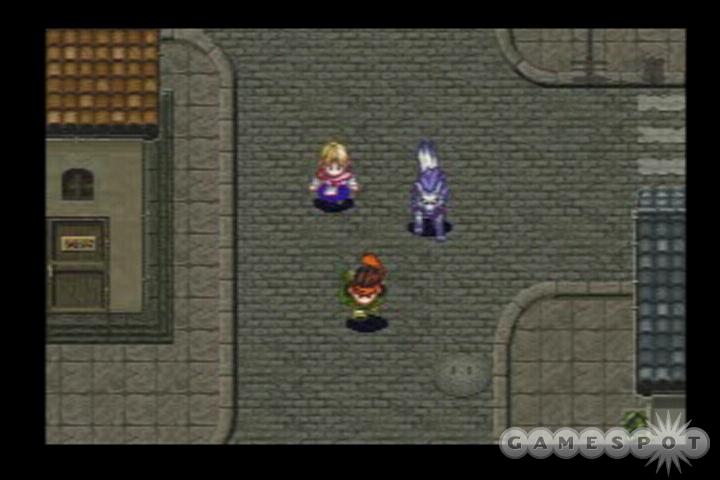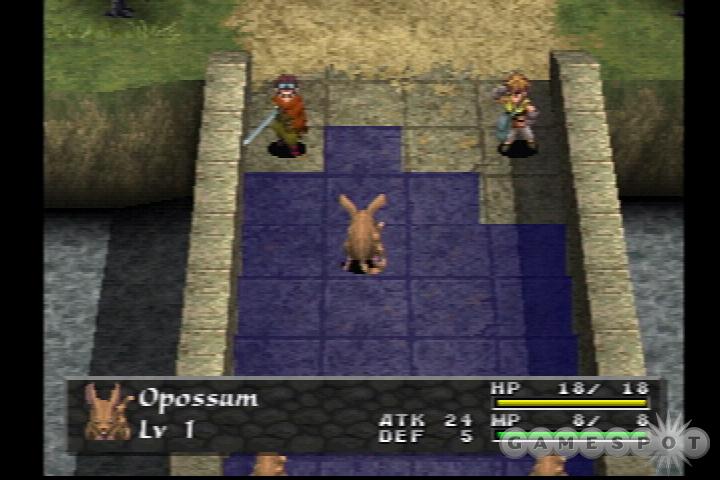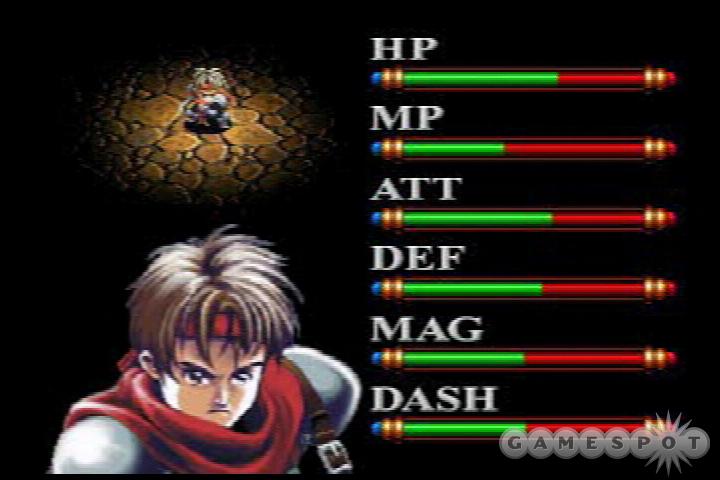Arc the Lad was originally released in Japan during the summer of 1995. It was a strategy RPG hung on the familiar premise shared by countless console role-playing games--it told the story of a young man who came of age and gathered faithful companions on a journey to save the world. Two direct sequels followed that continued to trace the efforts of good against evil in a tale of increasing breadth and scope, and we would never have seen these games outside of Japan had it not been for the efforts of Working Designs. It's a noble endeavor, and if you can find the time to tame the Arc the Lad Collection and the patience to sometimes painstakingly level your characters, it's worth a try.

The collection itself consists of four games: Arc the Lad, Arc the Lad II, Arc the Lad III, and Arc Arena. Arc the Lad I-III serve to make up a single, progressing story with a continually evolving cast of characters, while Arc Arena lets you use monsters you've captured in Arc II to battle in a beastly tournament. You begin the first game in the village of Touvil, where a girl named Kukuru seeks to free herself from the fate of her clan. The women of her line are pledged to wed the men of the royal family of their kingdom of Seirya, but Kukuru wants no part of it. To end her obligation, she douses the Flame Cion, a holy flame that her clan has sworn to protect, and in doing so, she awakens a terrible evil. That same night, from that same village, a teenage boy named Arc dons his father's armor and sets out to rekindle the sacred fire. Predictably enough, however, events have been set in motion that cannot be stopped, and this is only the beginning of what turns out to be a long fight against the forces of evil, with Arc and Kukuru at the forefront. The overarching story in Arc the Lad is contiguous through all of the titles, and while your main character and cast will change from game to game, most of the cast of the original game will still be present. The games truly feel like a mostly unbroken experience, and this is aided by the fact that you can convert your final save file from one game into your start file for another, carrying over some items and unlocking some events.
All three of the RPGs are turn-based strategy games when in combat, with enemies and allies moving according to their respective speeds. The battle interface and button configurations for battle remain intact from title to title, keeping you from having to relearn command schemes. Your allies can attack with a weapon, with magic, or with a special attack. When in close-combat melee, enemies may be struck at the side or the rear to lessen the chance of a counterattack; using a ranged weapon (like a spear) or otherwise attacking with a special move or from afar will prevent a counterattack entirely. Each character you recruit generally has his or her own suite of spells, songs, martial arts, or sword techniques, allowing for a lot of in-battle variety. While it can be tempting to rely on the same characters much of the time, the key to success is to both spread out the experience among all members of your party and to spend time leveling up.

Taking time off from your main quest to perform side quests, explore dungeons, and thereby level up your characters is just about a requirement in all three Arc the Lad games. If you attempt to progress through in a straightforward manner, going only where you need to, you'll often find yourself ending up woefully behind the enemies you're expected to face. End up too far behind by mistake, and you can find yourself in a dungeon you cannot leave, facing the same battle over and over again, having to painstakingly nurse your characters higher until you finally clear the area. Arc I won't even let you do this, as a lost battle means a game-over screen. If you're wiped out in battle in Arc II or III, you'll restart with your team at full health, and they'll retain any experience points they gained in their previous attempt, enabling you to limp to higher levels while you rue not having invested the time previously. The fact that the game forces you to level in this way can make certain stretches pure tedium if you've been trying to pass areas in rapid succession.
However, there's at least no shortage of extra places to explore and things to do. The Arc games are peppered with unexplored ruins, battle arenas, and guild jobs you can take to earn money and merits as well as experience; in Arc II you can use a certain character to collect monsters, and in Arc III you can use a certain character to collect monster cards. The rewards can be great, so it's generally well worth your while to distract yourself from the main narrative every so often to head off on extra adventures.

Arc Arena is a monster battling game in which you use your captured monsters from Arc II (via an imported save file) to battle against other creatures in tournament play. The game supports either one or two players, and you can unlock new battle modes and grab a few nifty items by racking up victories. You can also trade monsters with a friend, if you'd like. Arc Arena serves as a nice little extra to Arc II and as an amusing diversion for those who just can't get enough of battling monsters and winning fabulous prizes.
Graphically, the older games in this collection suffer noticeably, especially Arc I with its blocky sprites, washed-out colors, and boring-looking environments. Arc II is a good bit cleaner and brighter; its sprites are more vibrantly colored and better detailed down to the swishing scarves some characters sport. The dungeons remain largely monotonous, but outdoor battlegrounds see a bit of improvement--the tall grass of a plain will sway in the breeze, for example. Arc III is easily the best looking of all the games in the collection, and that's fitting, given that this game came out a good three years after Arc II. The characters have all lost their superdeformed chub and are both well modeled and well animated. Dungeons and outdoor areas have some natural character to them in the form of things like debris, fallen logs, and trees, which serve to blend as part of the whole rather than sticking out like they're obviously part of a tileset.
Characters have voice in battle, and it's all in the original Japanese, so if you can't understand what it is that they're saying, the emotion generally still comes through. The musical score evolves according to the games' ages. Arc I has a small number of highly repetitive tunes that get really old, really fast; Arc II recycles some of the same music while adding new tunes and themes that manage to be catchy; and Arc III has a good variety of sound, though sometimes, during character conversations, tunes will change several times. It's obvious that the music is meant to evoke certain emotions at certain key points, but the transition can be jarring, particularly if you're reading quickly and cycling through dialogue at a good clip. Despite this, however, the game still sounds quite good.

All of this is wrapped up in a package that's worthy of being named a true collector's edition. The manual for the games is hardbound and high-quality, clocking in at around 150 pages; the games ship with a special "making of" disc; and then there's the omake or "extras" box. The omake box contains 22 miniature character standees, four analog thumb button covers (three of them featuring main characters from the games), and an Arc the Lad memory card holder. That's all on top of the four games already included--Working Designs certainly doesn't stint on the crazy extras.
The Arc the Lad Collection is ultimately an interesting, varied, and rewarding experience that has a tendency to sometimes get bogged down. Those who aren't bothered by a "level or else" series of games and who are willing to give these titles the time they require will feel a definite sense of accomplishment, but those who prefer a more straightforward experience are advised to admire the collection's handsome box from afar.